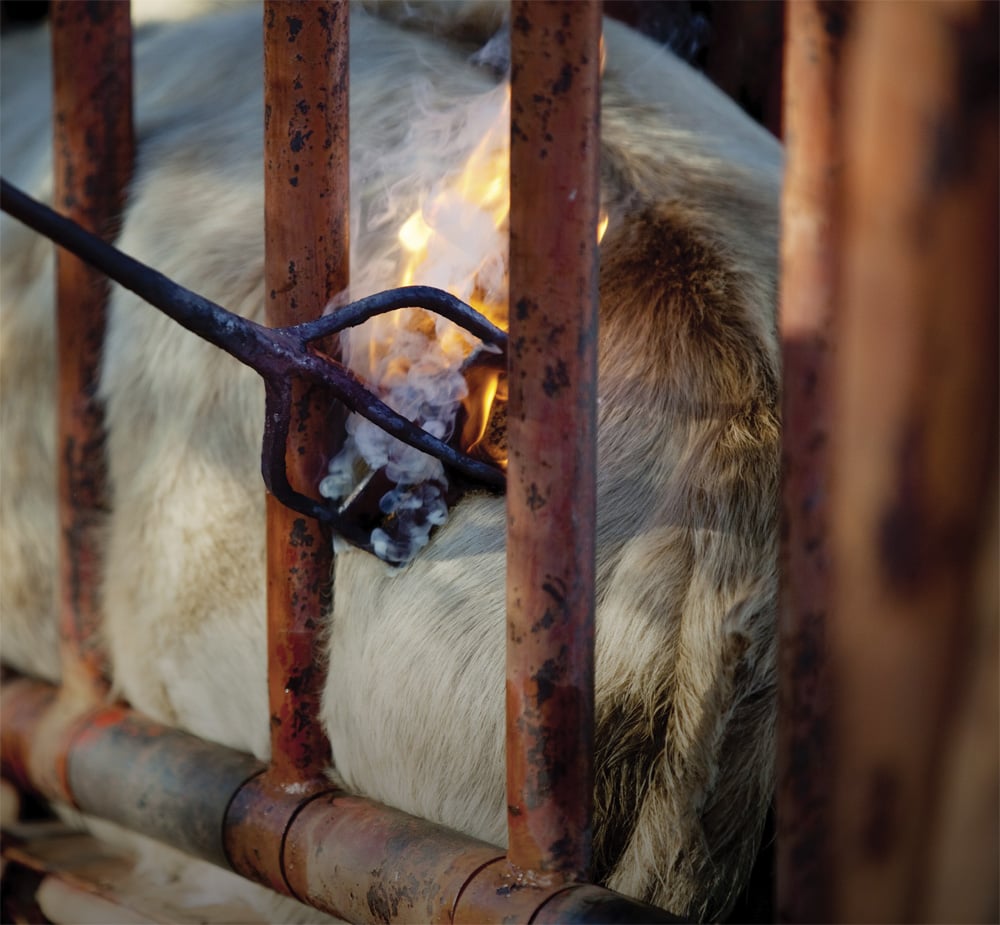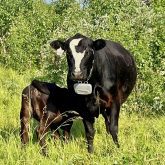Saskatchewan, Alberta and British Columbia are the only provinces in Canada with cattle brand registries and associated brand inspection services, all of which have reported a surge in new brand registrations with the rising prices for cattle last year.
Last spring, Bob Miller, general manager of Ownership Identification Inc. (OII) in British Columbia, noted a “considerable” increase in new beef ranch brand registrations. This spring, he calls it “huge.”
“The increase shows that producers do accept and see branding as a way to have permanent identification on their cattle,” Miller says.
Read Also

Body condition, nutrition and vaccination for brood cows
One of the remarkable events of the past century related to ranching has been the genetic evolution of brood cows….
OII’s current missing livestock report includes 21 active reports for cattle, totalling 85 missing head since May 2015.
Approximately 50 per cent of Alberta producers brand their cattle and that number along with the number of cattle branded is on the rise. Livestock Identification Services (LIS) general manager Shawn McLean reports 90 new brands registered this January alone, 70 of those for cattle and 20 for horses. In February, 59 of the 65 new brands registered were for cattle.
“It’s probably because of the increase in the value of cattle, but people are also becoming more aware of what can happen because of media reports and they are keeping watch on their cattle because they are hearing more about thefts,” McLean says.
In 2015 in Alberta, 229 cattle were reported missing, another 265 were reported as suspected stolen, and another 120 were reported as thefts.
Overall, that’s about five per cent higher than 2014, but it’s hard to say whether it represents an actual increase in missing cattle or better reporting by producers, says Corporal Christian Reister, RCMP livestock investigator for southern Alberta. The significant increase has been in the value of the loss because it follows along with the value of cattle.
Cameron Wilk, CEO, of Livestock Services of Saskatchewan (LSS) says cattle go missing for many reasons other than theft, including straying out of pastures and predation by wildlife.
Already in 2016 up to April 1, 180 cattle had been reported missing in the province. The tally for the northwest, which historically has been the hot spot for missing cattle, shows a jump since 2013 when 13 producers reported 60 head missing with two reports being alleged thefts. In 2014, 31 producers in the northwest reported 533 head missing with 11 reports alleged to be thefts. In 2015, 29 producers reported 141 head missing with six reports alleged to be thefts.
Counting the ways
Credit fraud is on the rise, too. People finance animals and don’t report the security interest at the time of sale so that the proceeds are paid out directly to the consignor rather than to the lender.
As McLean puts it, the modern-day cow thief is more likely to find financial ways to steal cattle than doing it the old-time way, by rustling.
Corporal Reister says this is a worrisome trend because the industry needs lenders to continue to have confidence in the industry.
White-collar fraud, which Miller describes as people using internal auditing to make cattle disappear and then making an insurance claim for the loss, is becoming more prevalent in British Columbia. A common scenario is when a business or family relationship breaks down and one party feels gypped and takes cattle for what he or she thinks is deserved.
In each of the three provinces, all cattle in loads arriving and leaving auction markets are inspected by livestock inspectors, Reister says. If you bring in cattle with another person’s brand on them, you have to have a proper receipt from the owner of the brand showing that you are the rightful owner. If you don’t have the legitimate proof of purchase in hand, the brand inspector has the authority to hold the cattle and payment until rightful ownership is determined.
“We catch thousands of thefts this way and redirect the proceeds to the rightful owner. Whether it’s a relationship situation, or cattle have been stolen or strayed, there’s a lot of value in your brand,” Reister says.
Wilk reports that in Saskatchewan alone, the proceeds on 5,600 head of cattle were redirected to the rightful owners in 2015.
Brand inspection
If cattle aren’t branded, all an inspector has to go by are the shipping manifests. Branded or not, fill the manifests out completely, and clearly, including numbers and descriptions of the cattle on the load. Don’t assume that the brand inspector, transporter or market staff will do this for you, he adds.
Regulations in all three provinces require brand inspections on all cattle offered for public sale, including auction markets, electronic sales and farm-direct sales handled through dealers, cattle entering feedlots, packing plants and abattoirs, and leaving the province via any border for sale, pasture or shows. LSS maintains a district office at Winnipeg for overseeing inspection of cattle from Saskatchewan entering auction markets in Manitoba and, at the request of dealers, cattle leaving Manitoba going west.
The brand inspection programs in the west are in themselves a strong deterrent to cattle thefts. They co-operate with one another on circulating missing animal reports, flagging missing animals in the system and work closely with the 22 states that have similar programs.
The brand inspectors are the programs’ strength. They live in communities where they work, so they know the people and the cattle, McLean says, adding that all of Alberta’s brand inspectors are also beef producers, so they know what it means to lose cattle.
Properly branding your cattle is the undisputed top answer from all provinces on the question of how to protect cattle from theft. Any cattle thief who knows the business — and virtually all of them do have some level of understanding of the trade and cattle handling — knows that branded cattle are easier for authorities to track down. That makes them more apt to drive on by your pasture to find a herd that’s not branded.
Timely reporting of missing cattle ranked right up there, too. In fact, Wilk identified this as the No. 1 problem for brand inspectors and the RCMP when investigating missing cattle reports.
Whether your first call to report missing animals or strays that show up in your pasture should be to the RCMP or to the brand inspector depends on the province because municipal governments are involved with stray animals in some provinces.

















